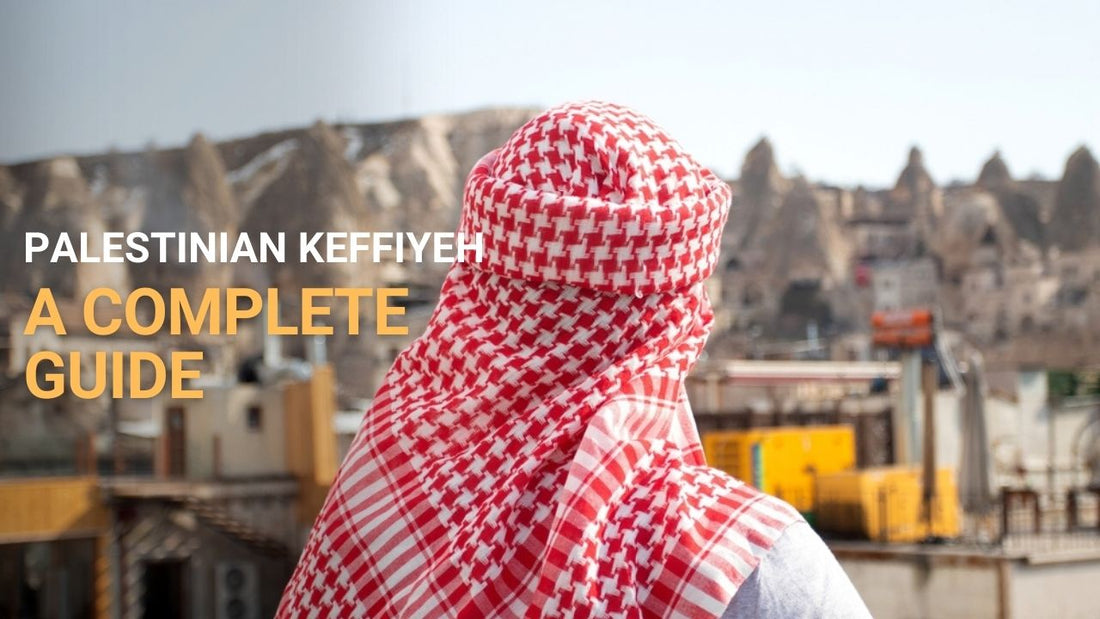
Palestinian Keffiyeh: A Complete Guide
Share
The Keffiyeh, often referred to as the Palestinian keffiyeh, is a simple yet profound piece of fabric that carries the whispers of Palestinian history with every thread that binds it. Its black and white checkered pattern is not merely a fashion statement but a symbol of identity, resistance, and an age-old tradition that has transcended borders. As you drape a Keffiyeh, also known as the Palestine keffiyeh, you don a narrative of a land, its people, and its unyielding spirit. This piece unfolds the journey of the Keffiyeh from the arid lands of the Middle East to the global stage, delving into its history, significance in Palestine, its sole surviving factory, and its embrace by the fashion world. Whether you are a fashion aficionado or a history enthusiast, the tale of the Keffiyeh is bound to weave a chord of curiosity and admiration.
|
Aspect |
Details |
|
Origin |
Middle East |
|
Popularity in Palestine |
High |
|
Material |
Cotton or a mix of cotton and wool |
|
Popular Uses |
Headwear, neck scarf, symbol of resistance |
|
Fashion Adoption |
Worldwide, various high fashion adaptations |
|
Purchase |
Where did the Keffiyeh Originate?
The roots of the Keffiyeh trace back to the ancient civilizations of the Middle East. It's believed to have originated in Mesopotamia, where it was worn to shield oneself from the harsh desert conditions. The name 'Keffiyeh' itself is derived from the Arabic term 'kaff', which means to protect or cover. Over centuries, the Keffiyeh evolved from a functional headgear to a symbol of cultural identity, especially amongst the Arab communities. Its design and usage have been influenced by both the geographical conditions and the sociopolitical history of the region, making it a rich tapestry of Middle Eastern heritage.
Get yourself a Keffiyeh. Go to the collection.
The Keffiyeh's Popularity in Palestine
The Keffiyeh is much more than a piece of cloth in Palestine; it's a symbol of identity and resistance. The checkered fabric holds a special place in the heart of every Palestinian, representing a shared history and collective aspiration for freedom. Its popularity soared during the mid-20th century, especially during the Arab Revolt of the 1930s when it was adopted as a symbol of Palestinian nationalism. The Keffiyeh continues to be a powerful emblem, resonating with the enduring spirit of the Palestinian people amidst geopolitical complexities..
The Original Keffiyeh Factory in Palestine
The Hirbawi Textile Factory holds the unique distinction of being the sole manufacturer of the traditional Keffiyeh in Palestine. Established in 1961 in Hebron, the factory has braved the tides of time, continuing the legacy of Keffiyeh weaving amidst a backdrop of economic and political challenges. The clatter of its looms is not just a melody of production but a resonance of perseverance and a testament to the unyielding spirit of Palestinian craftsmanship.
The Keffiyeh in the Fashion World?
Keffiyeh's journey didn't stop at the borders of Palestine; it found its way into the global fashion arena. Its unique pattern and profound symbolism caught the eyes of fashion designers and enthusiasts worldwide. High-fashion runways have seen models draping Keffiyehs, and it has become a trendy accessory among youth seeking a blend of style and statement. The global adoption of the Keffiyeh also sparked conversations about cultural appropriation versus appreciation, shedding light on the deeper narrative that each thread of the Keffiyeh carries.
Support Palestine by buying Clothing Collection that is based on the history and culture of Palestine
The Keffiyeh: Cultural Appreciation or Appropriation?
In recent years, the Keffiyeh has transcended its regional roots, finding its way into global fashion runways, celebrity wardrobes, and street style across continents. While its widespread adoption is a testament to its aesthetic appeal and versatility, it has also ignited a debate that treads the fine line between cultural appreciation and appropriation.
Cultural Appreciation: At its core, cultural appreciation involves understanding, respecting, and valuing another culture. When individuals adopt elements of a culture in a manner that honors and respects its origins, it can foster intercultural understanding and bridge divides. Many argue that the global adoption of the Keffiyeh is a form of appreciation, a nod to its rich history and the Palestinian narrative.
Cultural Appropriation: On the flip side, cultural appropriation is when elements of one culture are borrowed, often superficially, by another culture, particularly when the adopting culture has historically oppressed or colonized the original culture. Critics argue that when the Keffiyeh is worn as a mere fashion statement, devoid of its historical and political significance, it dilutes its value and can even be seen as disrespectful.
Check out how Palestinian clothing has become a bit of fashion statement in our comprehensive guide.
The Keffiyeh Controversy: High-fashion brands and celebrities have occasionally faced backlash for using the Keffiyeh without acknowledging its Palestinian roots. Such instances have been criticized for commodifying a symbol of resistance and identity. Moreover, when the Keffiyeh is stripped of its context and is merely seen as an "exotic" or "trendy" accessory, it can overshadow the struggles and narratives of the Palestinian people.
Finding the Balance: The key lies in striking a balance. If one chooses to wear the Keffiyeh, it's crucial to understand its significance and history. It's not just about wearing a piece of fabric but about carrying a narrative, a history, and a symbol of resistance. Engaging in conversations, educating oneself, and being open to understanding different perspectives can pave the way for a more inclusive and respectful global community.
In conclusion, Keffiyeh's journey from the arid lands of Palestine to global fashion stages is a testament to its enduring appeal. However, as it weaves its way around the world, it's essential to remember the stories, struggles, and spirit it embodies.
What is Keffiyeh Made From?
Traditionally, the Keffiyeh is crafted from cotton, which provides the fabric its characteristic softness and breathability, making it apt for the harsh climate of the Middle East. Some variants also blend in wool to add warmth for cooler conditions. The weave is distinct, designed for durability while embodying a simplistic elegance. The choice of material not only ensures comfort but also stands as a tribute to ancient craftsmanship, blending utility with cultural heritage.
Popular Uses of Keffiyeh
- Headgear: The primary use of the Keffiyeh has been as a headgear to protect against the scorching sun and blowing sands of the desert. Its design provides effective cover while allowing ventilation.
- Neck Scarf: It's also worn as a neck scarf, providing a stylish and practical way to keep cool in the heat or warm in the cold.
- Symbol of Identity and Resistance: Over time, the Keffiyeh has emerged as a potent symbol of Palestinian identity and resistance. Its checkered pattern and distinctive look make it a powerful emblem of unity and tradition amidst the tumult of Middle Eastern geopolitics.
- Fashion Accessory: The fashion world has adopted the Keffiyeh as a trendy accessory, worn by people around the globe who appreciate its aesthetic appeal and the cultural narrative it embodies.
Deep Dive into the Symbolism of the Keffiyeh
Over recent decades, the keffiyeh has gained popularity among the broader Palestinian community. It's moved beyond a marker of social class to now stand as a symbol of Palestinian identity and resistance. The checkered pattern, often seen in black and white, is not just a design but carries deep-rooted symbolism. For instance, the fishnet pattern represents Palestinian sailors and the Mediterranean Sea, emphasizing the importance of fishing in regions like Jaffa and Haifa. The bold routes and lines symbolize trade routes of natural & cultural merchant exchange. The wavy olive leaves, on the other hand, signify perseverance, strength, and resilience, drawing parallels with the olive trees that are emblematic of Palestine and its struggle
How to Wear a Shemagh?
The Shemagh, another term for the Keffiyeh, is a versatile piece of fabric that can be styled in numerous ways. Here's a simplified guide to wearing it:
- Basic Head Wrap:
- Fold the Shemagh into a triangle.
- Drape it over your head with the folded edge across your forehead.
- Take the two ends and tie them at the back of your head.
- Adjust for comfort and ensure the fabric covers your head and neck.
- Neck Scarf:
- Fold into a triangle and roll it until it forms a long, narrow piece.
- Drape it around your neck and either leave the ends loose or tie them together.
- Desert Style:
- Start as you would with the basic head wrap.
- Once tied at the back, take one end and wrap it across your face and over your head.
- Tuck or tie the end to secure it.
Each style has its own flair and function, allowing the wearer to make a statement while enjoying the practical benefits of this timeless accessory.
A step into tradition, a step into style. Learn the various ways to drape the Keffiyeh and carry a
From where can I buy a Palestinian keffiyeh?
The journey of tradition can begin at your doorstep. Visit our collection and own a piece of Palestine’s enduring spirit.
Visit our website for more information. Alternatively, contact us to place your order and make your Ramadan memorable.
Check out our Palestinian Clothing line and support the struggle of Palestinians
Note: Holy Land Dates is not just business for us. We promise to donate 50% of our net profits to support vulnerable children all over the world.
